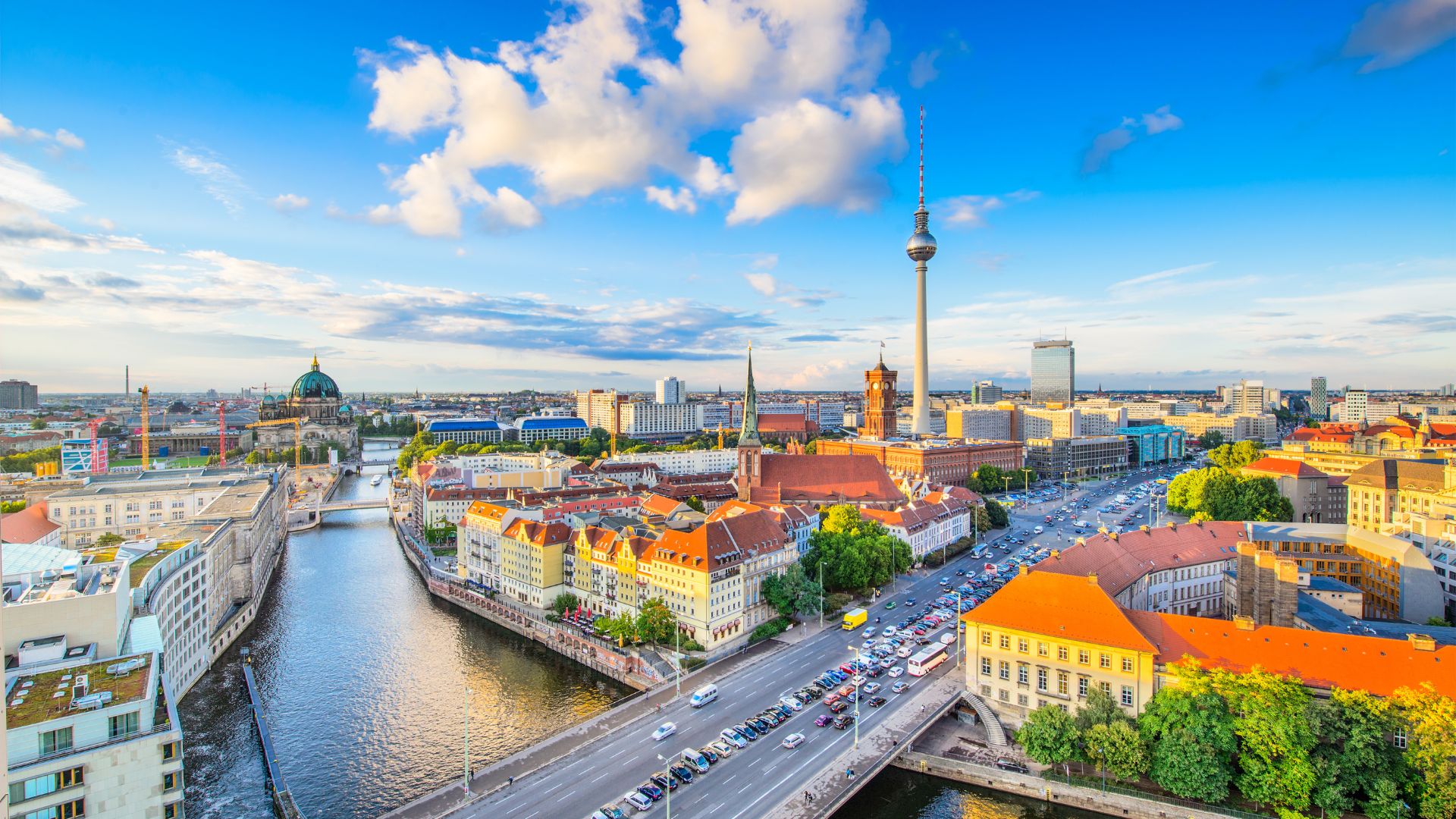Recently, we explored the key factors shaping the French food and beverage market. The focus was largely around the growth of healthy lifestyles, convenience foods, sustainability and value for money as key purchasing factors. As we look at the German market this week, we can see many of these trends overlapping, indicating a broader shift within Western Europe’s food and beverage market. So let’s take a look at the top trends driving the German sector in 2023!
Home To Europe’s Largest Food and Beverage Market
As the fourth largest economy in the world, it’s no secret that Germany is an economic powerhouse. The size of their F&B market is a testament to this.With a population surpassing 83 million as well as some of the world’s wealthiest consumers, Germany houses the largest food and beverage market in the European union. It’s also one of the largest importers of agricultural products in the world. Supply chain issues and pandemic challenges have dampened consumer confidence in recent years amidst rising inflation, so while the German food industry grew by 17.3% year-on-year in October, this growth was primarily driven by an increase in product prices owing to inflation, as price-adjusted sales declined by 5%. However, positive signs of growth are emerging. Towards 2027, total revenue in the food and beverage sector is set to grow at 12% per annum, whilst volume growth in 2024 alone is set to reach 1.6%–indicating increasing appetite.
Price, Quality and Flavour As Key Purchasing Factors
Consumers in Germany are generally price-focused, and this has only increased in recent years with supply chain issues stemming from the Ukraine-Russia War leading to sharp price increases. Just over three-quarters of all German consumers say they’re keeping an eye on product prices when shopping, a figure that has increased by 8% since 2022. This is no surprise though, especially given the fact that food prices in the country rose by over 20% in 2022 alone. Because of this, 63% of German consumers are now focused on keeping an eye out for special offers or promotions.
However, quality remains the most important factor when it comes to choosing food, and is also growing in importance as a key purchasing factor. When asked about the most important aspects when selecting food products, 68% of German consumers indicated good taste or flavour, 62% freshness, and 53% quality. The consumer focus on regionality and sustainability is also seeing product origin and environmental claims taking on a more important role in purchasing decisions. This is followed by regionality and only then, product price. However, sustainability factors including animal welfare, seasonal products, organic and fairtrade are now taking centre stage, and we’ll dive deeper into this in just a moment!
Sustainable, Local and Ethically-Sourced Produce On The Rise
Germany is well-known to be a largely eco-conscious consumer market, and this is evident across industries. For instance, Germany’s electric car uptake is amongst the highest in the world. And the food and beverage industry is no different, with German consumers acknowledging this to be a key area where they can contribute to a healthier planet. Now, more than ever, German consumer values are influencing their purchasing patterns and behaviours. They’re paying more attention to the origins and production processes of foods and beverages. This is driving sales of organic food products, with Germany being the second largest organic food market in the world. Organic edible oils and sauces are particularly strong performers, both being among the fastest-growing organic food categories on supermarket shelves.
Emerging from this trend, a relatively large proportion of consumers are making the switch to greener diets–from buying free-range eggs or non-GMO products to going vegan or vegetarian. Almost half of consumers are simply reducing their meat and fish consumption, 18% consider themselves flexitarian and 12% are vegetarian or vegan. Vegan alternatives to meat-based products are also emerging at a rapid rate, including soy steaks and vegan Bratwurst, and they’re especially popular amongst younger consumers. The plant-based trend is also set to boost sales of vegetables and nut varieties. Consumers are also demanding more transparency from brands, including detailed information about their supply chain, partners’ supply chains and production processes. Part of the sustainability trend is a focus on locality, with many Germans preferring to buy locally-grown and manufactured foods to minimise climate impacts, as well as seasonal produce.
The statistics also speak for themselves, with approximately 70% of Germans concerned about pollution and climate change. And while environmental sustainability is very much front-and-centre, social sustainability is of growing importance as well. Consumers are also seeking out products with fair trade certification, indicating their willingness to balance concerns over both people and planet. Retailers have taken note of these trends, with Germany’s two major grocery retailers Edeka, Rewe, Aldi and Schwarz investing heavily in their sustainable sourcing strategies as part of their strategic priorities to attract consumer attention. This includes focusing on sustainably-procured fish, buying local brands and expanding their range of organic, and their range of Fairtrade and eco-friendly certified products.
E-Commerce Takes Off While Supermarkets Look To Differentiate
As we’ve seen around the globe, COVID-19 has accelerated the growth of omnichannel retailing. With Germany’s relatively sophisticated e-commerce landscape and highly developed economy, it’s no surprise that the uptake of e-commerce has been rapid. Since the start of the pandemic, e-commerce sales have grown by 56% while omnichannel retailers surpassed the growth of exclusively e-commerce players, experiencing 80% growth in recent years.
Within the e-commerce space, new business models are also emerging rapidly. Notably, impulse grocery delivery services such as Flink and Gorillas are scaling quickly, offering 10-minute delivery times. While supermarkets traditionally offer slower in-house delivery services, the emergence of such players is set to see supermarkets incorporate these types of rapid services as well to remain competitive, whilst others will simply leverage third-party platforms.
In the supermarkets segment, food volume sales have declined–a result of increasing costs for supermarkets, and increasing prices for consumers. Because of this, supermarkets are struggling to secure brand loyalty, and instead, discount grocery retailers like Aldi and Lidl have now become the largest F&B distribution channel. Lower-cost brands are also gaining traction, while 72% of Germans are buying more private label branded products. However, come 2024, the German retail sector is set to recover and potentially even show signs of growth with this growth extending to the grocery sector as well. For supermarkets, differentiation in coming years will rely on offering more premium, organic and sustainable options. Retailers are also actively looking for private label suppliers, which may provide an opportunity for Australian exporters to supply the German supermarket space.
Consumers Look For Convenient and Healthy Products
With health only becoming more and more of a priority for global and German consumers alike, this is leading to a shift in consumer purchasing behaviour. 56% of German consumers have indicated that they actively try to eat healthy, and a smaller yet significant percentage aims to avoid artificial flavours or preservatives. Consumers are also actively seeking out new superfoods, clean label products as well as those ‘free from’ perceived harmful ingredients like gluten or lactose. Foodservice operators are also hopping on health trends, offering customisable menus with various portion sizes, vegetarian add-ons and healthier substitutions. With health trends evident and expanding across the country, German retailers are looking for healthier food and beverages, offering an opportunity for Australian exporters marketing themselves based on their health positioning.
As home-cooking took-off during the pandemic, consumers have become more comfortable preparing food for themselves. This has seen a rising demand for DIY meal kits like HelloFresh and Amazon Fresh, which allow consumers to follow simple, straightforward recipes while still enabling them to be creative and add their own twist to dishes. The growth of meal kits also taps into the zero waste trend, by only providing the necessary quantity of ingredients to limit waste from unused ingredients. Plus, meal kits are also leveraging the growing health and wellness trend with portion-controlled sizes and healthy recipes.
After years of lockdown, it’s good to see consumers spending more time outside the home–whether for school, work, leisure or travel. As consumers continue to venture out-of-home for daily activities, this is seeing an enhanced focus on convenient on-the-go products. In Germany, there’s particularly high demand for ready-to-eat products, as well as snacks and products in smaller packaging sizes. For instance, over a third of German consumers now eat breakfast out-of-home, and half don’t eat lunch at home. Producers are already taking note of these trends by creating both convenient and healthy foods like pre-packaged smoothies and salads. This presents a strong opportunity for Australian producers of ready meals as well as nutritious, filling snack products–especially with experts predicting a growing demand for healthy convenience foods and to-go meals in 2023.
Competitive Intensity and Demands For Local Products As Potential Barriers
While there are a plethora of opportunities available in the German F&B industry–especially in the sustainability space–such a large and sophisticated industry does create its challenges. Competitive pressures in the German retail space are incredibly high, with average margins in food retail between just 1-1.5%. And the market is saturated, with a plethora of both German and European foods and beverages available on the market–from a wide range of German beers to French wines.
As we’ve already discussed, consumers and retailers alike are focusing on local sourcing, both as a means of supporting local producers and minimising climate impacts by reducing travel time within the supply chain. Quality perceptions of German-sourced and manufactured foods are also high, with Germany known around the globe for its food quality, safety and innovation. This presents a challenge for Australian exporters due to the distance covered to transport products to Germany. While this will likely cause a barrier to entry in some cases, Australian exporters may overcome this barrier by focusing on other sustainability claims to offset the impacts of freight travel, including eco-friendly packaging, organic certification or animal welfare claims.
Wrap Up
There we have the top trends driving the German food and beverage market. As we’ve seen, the market is certainly one of enormous opportunity given its immense size. Further, many of the trends we’re witnessing in Germany are reminiscent of what’s happening in the Australian market, from demand for convenience and health foods to organic-certified products. But such a large market also creates challenges–notably intense competition. With Germany also known for its high-quality produce and consumers looking to make more sustainable choices, Australian exporters will also need to balance these considerations when formulating their German market entry strategies.
We hope you’ve found these insights on the German market helpful. As always, if you’ve got any questions or want to discuss export opportunities for your company, feel free to drop us a line at Export Connect – we’d love to hear from you.




